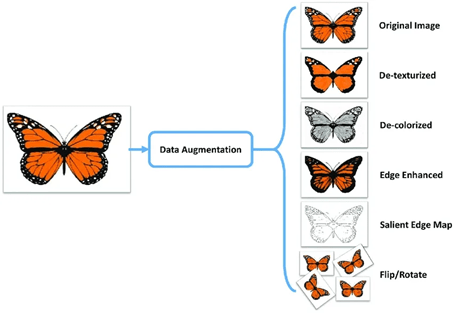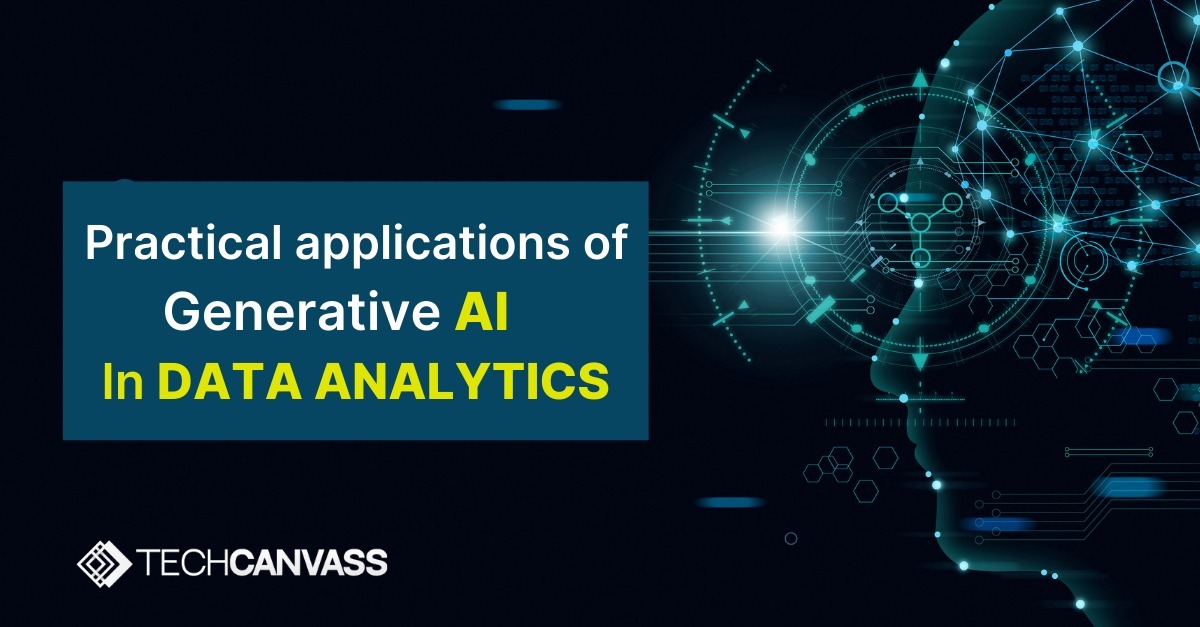Last Updated on February 7, 2025 by Techcanvass Academy
In a very short period of time, may be over a last decade, data analytics has went through several big transformations. Initially, it became digitized. Second, we all witnessed the emergence of ‘Big Data’ analytics, driven partly by digitization and partly by massively improving storage and processing capabilities. And now, in the last couple of years, analytics has been transformed once again by emerging Generative AI models that can analyze data at a previously unseen scale and speed. Gen AI is becoming a data analyst’s personal assistant, taking over less exciting tasks – from basic code generation to data visualization. With a bit of practice, you can successfully use GenAI for data analysis and visualization. But how do you get started? Are there any limitations to LLMs in data analytics? let’s take a look at practical examples of how to use generative models for data analysis.
AI Predictive Analytics
I’m going to give you a funny relevance and you are going to like it! You know how you can predict if your friend is about to cancel plans based on their past behavior? 😊 AI does something similar, just on a much bigger scale! Let’s talk about predictive analytics. Just like us, AI makes an educated guesses about the future by studying the past. For example you have a spreadsheet full of sales data from the last couple of years. Every transaction, every seasonal spike, every quiet period – it’s all there. You feed that data into AI and it tells you what your sales will look like in the upcoming months. For example, a healthcare institution can determine the busiest times in the year in terms of patients. They can then predict how many physicians to hire during those periods.

Data Analytics Interview Questions and Answers | Mumbai AI Event
Anomaly Detection
When a business works with huge sets of data, data analysts must employ automation to lighten their workload and generative AI fits the bill really well here. By understanding normal data patterns, generative AI can identify subtle anomalies that traditional analytical methods might overlook. This capability is particularly important in cybersecurity and fraud detection.
For example, if you work in cybersecurity, AI models (like something called a Variational Autoencoder) are good with network traffic. These models spend time learning what “normal” looks like in your network – you know, the usual stuff like employees checking their email, accessing files, or using company apps. Once they understand the typical pattern, they become really good at raising an eyebrow when something doesn’t quite fit and flags it as an anomaly. This helps prevent attacks, leaks, misuses and other types of threats. It instantly detects and generates alerts for even the most nuanced potential security breaches.

Data Augmentation
You may collect data but not have enough information for data-driven decision making or creating dashboards. Let’s say you’re teaching someone to recognize cats, but you only have a handful of cat photos. That’s where generative AI steps in – it takes your original cat photos and show them from different angles, in different lighting, or with slight variations. It’s similar to how you might learn to spot birds. If you’ve only seen cuckoo bird sitting still on a branch, you might struggle to recognize one in flight or in the shade. But if you could see that same cardinal in all sorts of situations – flying, eating, in rain, in sunshine – you’d get much better at spotting them in any scenario.
It’s Alright if you have limited data, data augmentation will allow you to create a more diverse and representative dataset. By utilizing these transformations, you can simulate new scenarios and variations that the AI model may encounter during deployment, making it more robust and general.

For example, you may want to use machine learning to detect rare diseases by looking at medical images. The problem is that there are not enough of these images since the condition is so rare. You can use AI to create synthetic images that look like real-world medical scans. This augments the dataset and improves the accuracy of the model.
Synthetic Data Generation
Most of the Fintech startups in India use this. As a Fintech startup you have huge volumes of customer data and want to identify the spending patterns of your customers. You can’t just reveal your customers account data to an AI system. However you can ask AI analytics tool to create a synthetic data set. The fake data shows all the same patterns (like how people tend to spend more around the holidays or save more in January), but instead of real customer information, you get completely made-up profiles that act just like your real customers. You can now easily conduct an analysis without compromising any customer data.

The journey of integrating generative AI into data analytics is just beginning. The integration of generative AI in data analytics is not just a technological trend but a fundamental shift in how organizations derive insights. As models become more sophisticated and ethical frameworks mature, we can anticipate even more revolutionary applications across industries. Organizations that embrace this technology will gain unprecedented competitive advantages in understanding their data, predicting future trends, and making more informed decisions.



